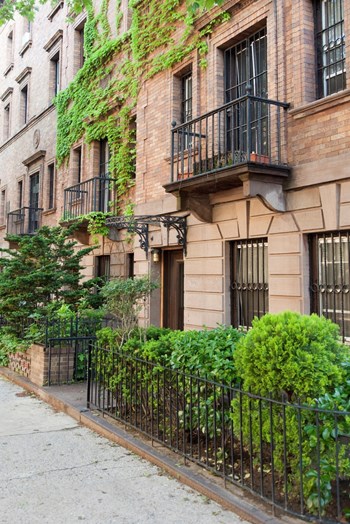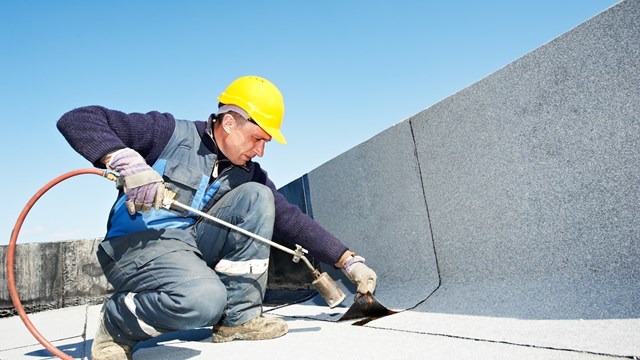
In New York City, where space is at a premium, balconies and terraces offer co-op and condo owners a way to maximize their living space while also providing unparalleled views of the city they love. They are the small oases to which we escape for a glimpse of sunlight, the feel of a warm breeze or simply to hear the sounds of the city, reminding us of the life and vitality humming so far below. A balcony is also a place where we can look side to side and see our neighbors face to face, offering a wave, hello or intellectual discussion with the people with whom we share our walls, halls and elevators.
Just as we expect airplanes and bridges to hold us aloft without worry, we presume the same for our balconies. Safety for a balcony must be as big a concern as aesthetics and space. New Yorkers were reminded of that premise this past summer when a young woman fell 16 stories to her death when the railing of her narrow balcony collapsed as she leaned against it. An investigation later determined that the aluminum railing was installed in 1931 when the building was originally constructed, and did not have the welded rivets required by today's building standards.
This was not the first time a tragedy of this nature had happened in the city. As recently as 2010, a young man fell 24 stories after the railings on his balcony collapsed.
Both of these stories are stark reminders of the importance of good construction and consistent inspections to ensure not only a sound structure upon initial completion but longevity in the years and decades that follow.
Starting Strong
The vast majority of balconies and terraces are designed as part of the architect’s master vision for the building. “They are usually built with the building itself and incorporated into the basic design,” says Michael Pucci, presiden of FM Pucci & Associates Ltd., construction consultants based in New York. “They use fundamental elements of the building itself. Usually steel and concrete.”
Balconies and terraces are rarely added to an existing building, although it is possible. “You can probably add them, but it’s a lot of work,” says Tony Pappas of AJP Contracting Corporation in Maspeth, New York. “You would have to find out if building codes allowed you to add. A structural engineer would have to get involved and the structural integrity of the building would need to be looked at. An architect also would have to get involved. It’s a pretty rare thing to do, but it depends on how badly you want it.”
In addition to the basic structure of a balcony, there are the decorative elements that make it stand out—the masonry, glass, steel or aluminum that form the enclosures. The different types of design are myriad, adding distinctive character to the buildings they adorn.
Staying Strong
Inspections are imperative in the ongoing safety and conservation of balconies and terraces. According to Kelly Magee, press secretary with the New York City Department of Buildings (DOB) and Local Law 11 require that “Property owners of buildings that are six stories or taller must have their building’s exterior walls and appurtenances, which include balconies, inspected once every five years.” These inspections are staggered into cycles and sub-cycles based on the last digit of the building’s block number.
All inspections must be conducted by a Qualified Exterior Wall Inspector, also known as a QEWI. These individuals are architects or engineers licensed by the state of New York and possessing at least one year’s experience.
Following inspection, the QEWI will file a report and the building’s façade will be classified in one of three ways: safe; safe with a repair and maintenance program; or unsafe, which indicates that the façade has issues that pose a threat to public safety. Building owners who fail to file a report with the specified filing period face a monthly late penalty and additional fines should that tardiness exceed one year.
If unsafe conditions are found at a building, the owners are required to immediately install public safety measures such as a sidewalk shed to cover pedestrians or construction fences to keep crowds and passersby away from potential dangers.
Annual visual inspections by building staff are also beneficial, a way of adding an extra layer of protection for residents and others who pass the building each day on the streets below. “Annually or every couple of years, the façade should be looked at,” says Pappas.
Pucci agrees. The balconies should be “monitored on a regular basis with the overall building façade,” he says. “Generally once a year or sometimes more, depending on the conditions the façade is exposed to.” For example, spalling, which is the breaking, flaking or pitting of concrete can be an indicator of a problem. Staff should determine whether or not “the basic design is holding up over time,” says Pucci. “Is the overall performance of the masonry or concrete good?”
“You’re looking for visible signs of wear and tear,” says Pappas. “Are there chips of concrete falling off? It becomes pretty obvious if problems are happening.”
According to materials provided by Magee, inspectors will examine the underside of balconies, looking for spalls, rust stains, cracks and standing water, which can be caused by the corrosion of reinforcing or supporting steel or lack of drainage. Because they are exposed horizontal surfaces, balconies and their components can face deterioration caused by repeated water accumulation. Spalling can also be an issue around the posts that hold up the railings or guards as well as at the anchor bolts. Cracks at the base of those posts or movement indicating looseness are major concerns.
They also will look for loose, defective or failed guards or railings, including pieces that are unattached or “out of plane,” which can be caused by the deterioration of connections or impacts that may have jarred the different parts.
Inspectors will examine, too, whether or not there is any sagging in the balconies. They will take a look at the “horizontality of the balcony slabs, verticality of handrail posts and deterioration of panels.” The sources of those types of issues usually stem from improper design or construction or concrete creep, which occurs when solid materials slowly move or deform due to long-term exposure to high levels of mechanical or environmental stresses.
Delaminating concrete is also of concern, including the horizontal splitting of concrete especially around drains. According to the DOB materials, these types of problems are caused by poor quality concrete, poor vibrations of concrete leading to the formation of a weak plane, freeze and thaw action, or poor quality of prior repairs.
In 2013, an amendment was added to the city’s rules for completing technical reports and was made effective May 2013. The amendment requires that a Qualified Exterior Wall Inspector must examine the structural soundness and connections of balcony enclosures even if a report for Cycle 7, which runs from February 2010 to February 2015, has already been filed for the building. It continues, “A recent balcony accident highlighted that many balcony railings are uninspected and may be unsafe.”
With this new rule, the Department of Buildings “specifically requires all owners to check periodically the adequacy and structural integrity of their balcony railings.”
Building owners and maintenance teams who keep a sharp eye open for any signs of weakness will be well on top of the new amendment, ensuring that even the smallest hints of defect—from standing water to flaking concrete—will be examined and investigated for any larger issues.
And should any issues arise, repairs can be readily made. Most often, balcony issues resulting from any deficiencies in the areas defined by the city’s inspection checklists will result from problems with concrete, masonry or water. Contractors would “look at waterproofing and how to replace that,” says Pappas, and could undertake the removal and replacement of masonry to bring the balcony back up to standards.
Careful Maintenance Pays Off
Buildings, especially the skyscrapers that fill New York City, seem infinitely permanent and timeless, like unmovable mountains. The truth is, though, they grow old like everything else, and require a steadfast care to ensure their strength and integrity.
The balconies and terraces that adorn them are no different. For these oases of air and light to remain safe and sound they need to be monitored, watched and tended. The rules and regulations in place to ensure that watchfulness have gone and will continue to go a long way in ensuring that safety as will the diligence of the building and maintenance staff who care for them each day. With that support in place, New Yorkers can continue to enjoy their unparalleled views in the skies above their city.
Elizabeth Lent is a freelance writer and a frequent contributor to The Cooperator.






Leave a Comment